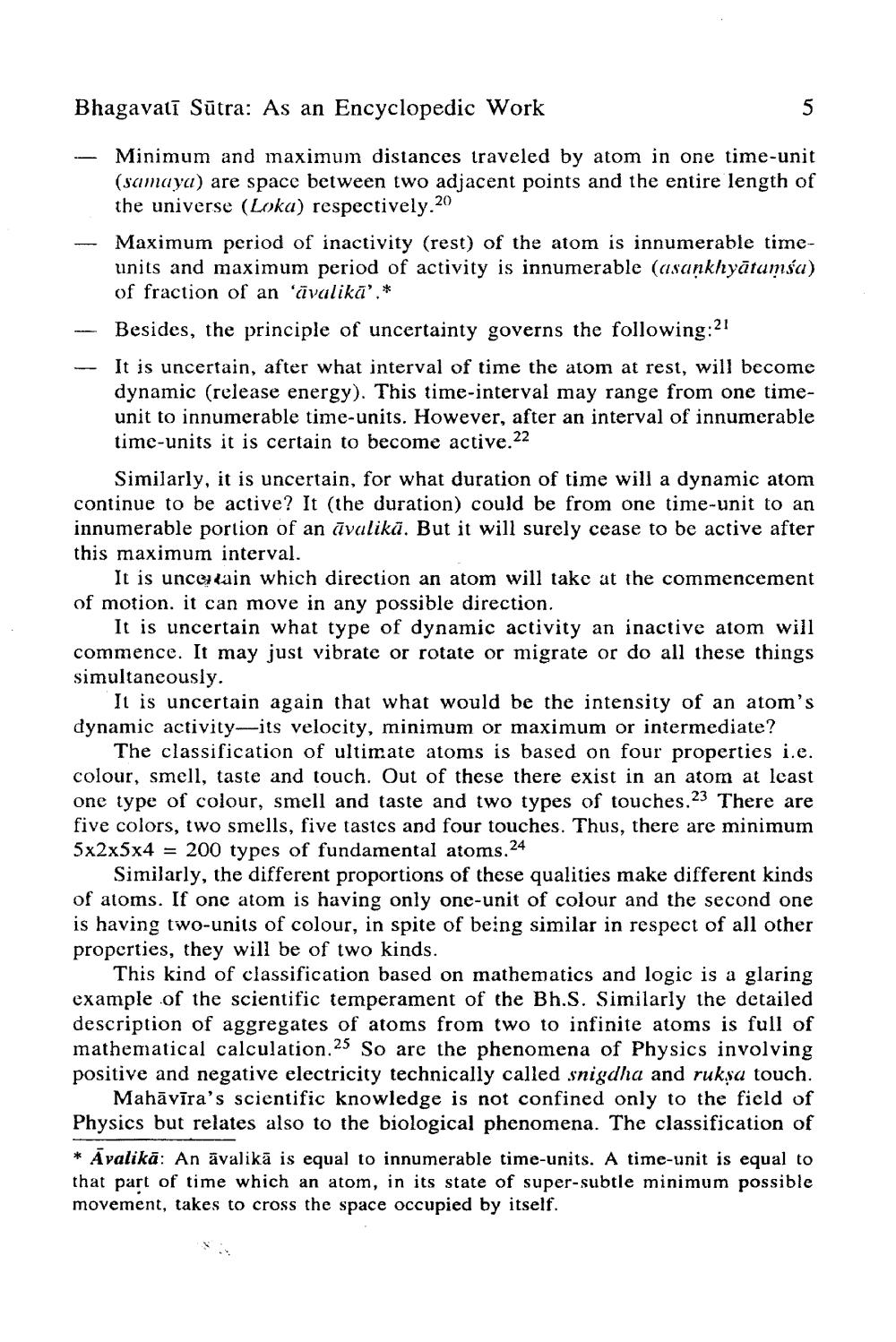________________
Bhagavatī Sūtra: As an Encyclopedic Work
- Minimum and maximum distances traveled by atom in one time-unit
(samayu) are space between two adjacent points and the entire length of the universe (Loka) respectively.20
Maximum period of inactivity (rest) of the atom is innumerable timeunits and maximum period of activity is innumerable (asankhyātumsa) of fraction of an 'avalikā'.*
Besides, the principle of uncertainty governs the following:21 It is uncertain, after what interval of time the atom at rest, will become dynamic (release energy). This time-interval may range from one timeunit to innumerable time-units. However, after an interval of innumerable time-units it is certain to become active.22
Similarly, it is uncertain, for what duration of time will a dynamic atom continue to be active? It (the duration) could be from one time-unit to an innumerable portion of an ūvalikā. But it will surely cease to be active after this maximum interval.
It is uncertain which direction an atom will take at the commencement of motion. it can move in any possible direction.
It is uncertain what type of dynamic activity an inactive atom will commence. It may just vibrate or rotate or migrate or do all these things simultaneously.
It is uncertain again that what would be the intensity of an atom's dynamic activity-its velocity, minimum or maximum or intermediate?
The classification of ultimate atoms is based on four properties i.e. colour, smell, taste and touch. Out of these there exist in an atom at least one type of colour, smell and taste and two types of touches.23 There are five colors, two smells, five tastes and four touches. Thus, there are minimum 5x2x5x4 = 200 types of fundamental atoms. 24
Similarly, the different proportions of these qualities make different kinds of atoms. If one atom is having only one-unit of colour and the second one is having two-units of colour, in spite of being similar in respect of all other properties, they will be of two kinds.
This kind of classification based on mathematics and logic is a glaring example of the scientific temperament of the Bh.S. Similarly the detailed description of aggregates of atoms from two to infinite atoms is full of mathematical calculation.25 So are the phenomena of Physics involving positive and negative electricity technically called snigdha and rukșa touch.
Mahāvīra's scientific knowledge is not confined only to the field of Physics but relates also to the biological phenomena. The classification of * Avalikā: An avalikā is equal to innumerable time-units. A time-unit is equal to that part of time which an atom, in its state of super-subtle minimum possible movement, takes to cross the space occupied by itself.




